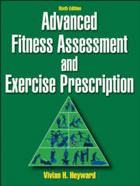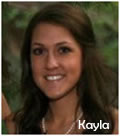|
pelinks@pelinks4u.org
Ph: 509-963-2384
Fax 509-963-1989
PE
STORE
PE
FORUM for
GAMES/ACTIVITIES

media
review
| |
|
| |
 |
 |
 |
|
Welcome
to the March edition of pelinks4u:
Last month's editorial on "Saving
Physical Education" sparked
reader response from home and abroad. Most
writers agreed that legislators and the public
often poorly understand the value of physical
education.
Commenting on his experiences in Ohio, Daryl
Siedentop felt that Ohio congressmen
and senators seemed to have utter distain
for physical education - opinions he believed
were based primarily on their own negative
physical education experiences. Daryl shared
an Op-Ed piece he wrote for the Columbus Dispatch
when he discovered last year that the legislature
"had completely ruined a rather good
piece of legislation that would have really
moved physical education in Ohio forward."
You can read Daryl's letter below.
This month's editorial "Is
change in the air?" focuses
on our professional future. As many of you
know, our national convention will be held
at the end of March in San Diego. Hopefully,
many of you will be there. Conventions are
a great time to celebrate the good things
happening in our profession. And after a harsh
winter, San Diego is a perfect place to celebrate
pretty much anything! But all is not well
with AAHPERD. Change is long overdue. Read
the editorial. Learn more about the challenges
facing AAHPERD, and if you are a member make
your voice and vote count at this critical
time in the Alliance's history.
Finally, be sure to check out the half dozen
original articles featured this month. Share
them with your colleagues and physical education
majors. The advice shared by our authors is
based on their many years of professional
and practical experience. The articles are
pretty brief, but full of thought-provoking
ideas. Enjoy.
Ps. I'm pleased to report that legislation
to remove the physical education requirement
in WA State did not make it to a vote this
year.
ARTICLE INTRODUCTIONS:
USING
A SMART BOARD TO HELP TEACH ELEMENTARY PHYSICAL
EDUCATION
In September, pelinks4u contributing
editor, Scott
Tomassetti switched schools. His new elementary
school has incorporated electronic "smart
boards" into every classroom. Scott describes
how he has learned to embrace this technology,
and gives practical examples of ways that
smart boards are enhancing his teaching. His
advice? "If you get the chance to have
one placed in your play-space or gymnasium,
don't hesitate for a second. Just be open
to trying new things and exploring the world
of interactive teaching."
Welcome
our new pelinks4u Editorial
Assistant, Kayla Johanson!

Bio: In 2010, Kayla
graduated from Central Washington University
with a Bachelor of Arts degree in Psychology
and Sociology. After much consideration,
Kayla decided to pursue a career as
a School Psychologist in order to join
the force of professionals striving
to help children learn and grow.
Currently
in her first year as a graduate student
at Central Washington University in
the School Psychology program, she hopes
to one day become a positive resource
for parents, teachers, and students.
We
invite you to contact her if you have
ideas for articles and/or would like
to write an article for publication
at pelinks4u. c/o Kayla
Johanson, pelinks4u@gmail.com |
TRAVELING
TO AND FROM SCHOOL: TO WALK OR DRIVE?
Physical educators may not be able to solve
the obesity crisis, but they can certainly
do more to encourage their students to be
more physically active. Every day, 50 or so
million students make a round-trip journey
between home and school.
Exercise advocate Tiffany
Quilter believes that many students live
close enough to ride or walk to school. In
this article she addresses practical issues
such as supervision and safety. She also introduces
readers to an amazing mileage tracking tool
available from Google that you will want to
learn about.
CHARACTER
BUILDING (OR REVEALING)?
Author Jon
Poole writes, "A long standing joke
among physical educators and coaches goes
something like, 'sports don't build character…they
reveal it.'"
Despite their obvious talents, it's clear
from media reports that many elite athletes
are not ideal role models for today's youth.
This makes it difficult for physical educators
and coaches whose programs often strive to
promote sports participation. Jon describes
how the use of the "Sport Education"
teaching approach combined with small-sided
games, can help to promote the positive character
building benefits of sports participation.
SPORTSMANSHIP
March 1st was National Sportsmanship Day,
and regular pelinks4u contributor
Gerry
Cernicky chooses to write this month about
ways that physical educators and coaches can
teach sportsmanship. It begins, he suggests,
with a sportsmanship code shared not just
with students but also with parents and the
entire school community. Coaches and parents
need to be taught appropriate and expected
behaviors. Fortunately, much has been written
on ways to foster good behaviors and prevent
bad behavior, and Gerry suggests useful resources.
This article is also available as a podcast.
ADVANCED
FITNESS ASSESSMENT AND EXERCISE PRESCRIPTION
Okay, this piece is actually our book review
for March, but it is so well written that
we decided to feature it with our articles.
Reviewer Ted
Scheck is clearly a fitness advocate,
and describes how he stayed active during
the recent winter storms. He also describes
in detail all facets of the book he reviewed,
and ways in which this information might help
physical educators serious about improving
their students' physical fitness.
SUCCESSFUL
INCLUSION IN THE REGULAR PHYSICAL EDUCATION
SETTING
It’s been more than 35 years since Congress
authorized the inclusion of individuals with
disabilities into programs that received federal
funds. Since then physical educators have
been challenged to find effective ways to
integrate students of all abilities into their
classrooms. It's not easy. Author, Tamara
Wilsey Forrester writes this month about
the many ways that physical educators can
modify, adapt, and create instructional settings
that are fair and appropriate for all students.
|
 |
|
EDITORIAL:
 IS
CHANGE IN THE AIR? IS
CHANGE IN THE AIR?
written
by Steve
Jefferies, publisher, pelinks4u
Almost 25 years ago, Shirl
Hoffman, then a professor at the University
of North Carolina, Greensborough, was challenged
to imagine a future without physical education.
Among many fascinating insights he wrote:
"Looking back over the rise and fall
of physical education in both public schools
and colleges, one couldn't help but be struck
by the welter of causes and interrelated
effects. Bressan (1979) had predicted the
eventual death of the profession, either
at its own hands or at the hands of others.
However, as things turned out, it was neither
suicide nor murder that did the profession
in, but death by natural causes. The profession
contracted what can best be described as
Organizational Alzheimer's, leaving it confused,
disoriented, and unable to put together
an effective strategy for accomplishing
reasonable goals. Professionals consoled
themselves with the notion that the profession
had lived a long and fulfilling life but
that professions, like people, do not live
forever. It wasn't until 3 years after its
passing that word finally reached the AAHPERD,
who immediately assigned a committee to
study the matter..."
This month, members of AAHPERD will convene
in San Diego and between presentations will
also consider the Alliance's future. Simultaneously,
NASPE members will participate in discussion
about the future of physical education at
the PE2020 Forum.
In contrast to Hoffman's bleak (and imaginary)
2020 predication, the good news for AAHPERD
members is that this year we are preparing
to confront key issues affecting our future.
And we are doing so before it's too late.
Nonetheless, all of us who care about physical
education and its allied professions would
do well to recognize that all is not well,
and the path the Alliance is currently on
is not sustainable.
For more than 20 years, 16 or so appointed
committees have visited then revisited the
challenges facing AAHPERD. Recommendations
for change were repeatedly made and ignored.
Simultaneously, membership has halved, costs
escalated, and income fallen. Ironically,
in a world beset by health challenges and
urgently in need of programs to counter sedentary
living, public support for what we do is meager
and the vast majority of health and physical
activity practitioners fail to see value in
professional membership. What's to be done?
What's clear is that doing nothing imperils
our future. In honesty, it guarantees our
demise. Unfortunately, as those who have attended
recent AAHPERD Assembly meetings know, inaction
best characterizes our decision-making. Alliance
member voting has persistently countered the
popular notion that "change is the only
constant." Meanwhile, membership and
budgets have continued to decline, and predictions
for the next few years are chilling. We seem
united only by a dogged determination to stay
proudly aboard our sinking vessel even as
it descends to the seabed. But perhaps all
is not lost? Hope may be in the air.
For the past year, an "Organizational
Planning Committee" has been studying
how to transform AAHPERD into a more efficient
and effective association. Previously, the
Board of Governors voted to transform the
Alliance into ONE national organization "focused
on comprehensive physical education and physical
activity." What does this mean? Don’t
trust my interpretation. See for yourself
by visiting the AAHPERD web site and listening
to the video
presentations.
Hopefully, if you are an Alliance Assembly representative
or an AAHPERD member who wants your professional
association to stay afloat, you will understand
the urgency of the need to do things differently.
Just imagine how we'd all feel if in 10 years
Hoffman's predication came true. Fortunately,
the fate of physical education does not appear
to face such immediate and dire consequences.
But that makes it an even more opportune time
to discuss and plan a roadmap for our professional
future. That was the vision of NASPE's PE2020
initiative, and to date more than 1800 visions
have been posted on the www.pe2020.org
web site. In San Diego, close to 250 individuals
are signed up to share and discuss visions
for the future.
pelinks4u will report more about
the outcome of the PE2020 Forum next month,
but I encourage you to take time to read some
of the visions. What's interesting is the
common outcome that many writers share for
physical education. Although differently phrased,
there seems general agreement that we want
to prepare young people for a future life
that is healthy and physically active. Of
course, how we can best do this is less clear,
but once again the submitted essays do often
seem to support certain key program characteristics.
For example, many people believe that to get
young people regularly active we need to do
more to connect with local community resources.
Perhaps just as important as debating what
we should be doing in physical education is
addressing how physical education
fits into future public school education thinking.
Debating how we think physical education should
be taught isn't going to matter much if physical
education is excluded in forthcoming educational
reforms. Impossible? Think again.
This year, Congress is due to vote on renewal
of the Elementary and Secondary Education
Act (ESEA).
Better known as No
Child Left Behind (NCLB) legislators will
have an opportunity to reaffirm or radically
change public school education practices.
While skeptics might point to the historically
lethargic pace of educational reform, more
and more data illustrates the extent to which
American students are falling behind the youth
of other nations. In a global society, the
consequences of a failing education system
threaten serious economic repercussions. Something
will need to be done. And soon.
And finally, world events of the past two
months leads me to conclude that doubting
the possibility or direction of sudden and
unanticipated change is an unwise and risky
gamble. |
 |
|
Commentary:
A Very Good Effort?
written by Daryl
Siedentop
 The
June 24th edition of the Dispatch quoted Governor
Strickland as saying that the recently passed
Healthy Choices for Healthy Children Act was
"for a beginning effort I think it's
a very good effort, and it is the result of
compromise and collaboration." The
June 24th edition of the Dispatch quoted Governor
Strickland as saying that the recently passed
Healthy Choices for Healthy Children Act was
"for a beginning effort I think it's
a very good effort, and it is the result of
compromise and collaboration."
The legislation covers eleven topics. Three
of the eleven sections of the proposed bill
(increasing from 20 to 20.5 units of PE for
graduation, requiring schools to report percentage
of students whose BMI is below, at or above
accepted BMI, and requirement for ODE to determine
whether schools are in compliance) were removed
from the legislation. The key "physical
activity" topic, requiring 30 minutes/day
of PA exclusive of recess and exempting athletes,
cheerleaders and band, was delayed
to the 2011-12 school year, was amended
to allow school approved community activities
to count towards the 30 minute/day requirement,
exempts career technical,
PSEO, and e-schools, and allows for a waiver
if schools feel that implementation presents
a financial hardship.
The requirement that ODE establishes a performance
indicator for PE was extended
to the 2012-13 school year. The requirement
for BMI screening of students in K, 3rd, 5th,
and 9th grades (schools could administer screening
or ask parents to obtain screening from pediatrician/family
physician) and allows parents to opt
out was changed to exempt e-schools,
and allows a waiver for schools
that feel implementation would present a financial
hardship. The requirement that districts must
report aggregate BMI data to ODE was removed
and changed so that ODH is responsible for
collecting aggregate data. The requirement
that schools adopt nutritional standards was
adopted. The requirement that ODE determine
whether schools are in compliance was removed.
The requirement to create an 18 member Healthy
Choices Council of 18 was amended
to allow for additional members.
When the legislation was introduced, Senator
Kearney said "we're going to get kids
moving for at least 30 minutes per day and
make sure they are developing good fitness
habits by providing high-quality physical
education classes" (PRNewswire, Nov.
17, 2009). The legislation as passed provides
several ways for districts to ignore the 30
minutes/day requirement, and essentially removes
any requirement for districts to employ certified
physical education teachers.
The Healthy
Choices for Healthy Children website
proclaimed that the adoption of the amended
bill "will make Ohio a national leader
in addressing childhood obesity," a claim
that the evidence cited above does not support.
Like many states, time for recess and physical
education in Ohio schools has been reduced
over the past few years as an unintended consequence
of No
Child Left Behind. School districts that
serve lower-income and minority families are
the districts most likely to invoke the "financial
hardship" criterion allowing them to
ignore the key elements of the legislation
that would improve physical activity opportunities
for their students; that is, the students
most likely to benefit from increased physical
activity will be the least likely to get more
opportunities for PA during the school day.
(Letter submitted to the Columbia Dispatch,
June 2010)
Daryl Siedentop bio: Included
among many accolades received over the past
30 years are the following: International
Olympic President's Prize (Samaranch Award),
AAHPERD C&I Scholar Award, Research Consortium
Award, NASPE Hall of Fame, OSU College of
Education Hall of Fame, Distinguished Alumni
Awards from Hope College, Western Michigan
University, and Indiana University, AAKPE
Fellow.
Dr. Siednetop also taught
PE and coached basketball and baseball at
Hope College (1960-69) and was in the Sport
and Exercise Education faculty, College of
Education, OSU (1970-2003.
|
|
 |
 |
 |
 |
 |
|
|
|
SITE
SPONSORS
LET'S MOVE IN SCHOOL
ATHLETIC
STUFF
CTRL
WASH UNIVERSITY
EVERLAST
CLIMBING INDUSTRIES
GOPHER
NASCO
NEW
LIFESTYLES
PHI
EPSILON KAPPA
SPORTIME
SPEED
STACKS
S&S DISCOUNT
TOLEDO
PE SUPPLY

|






